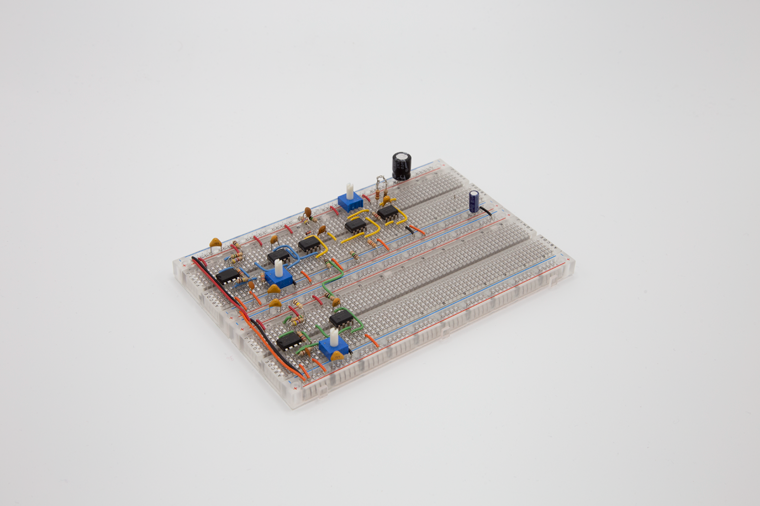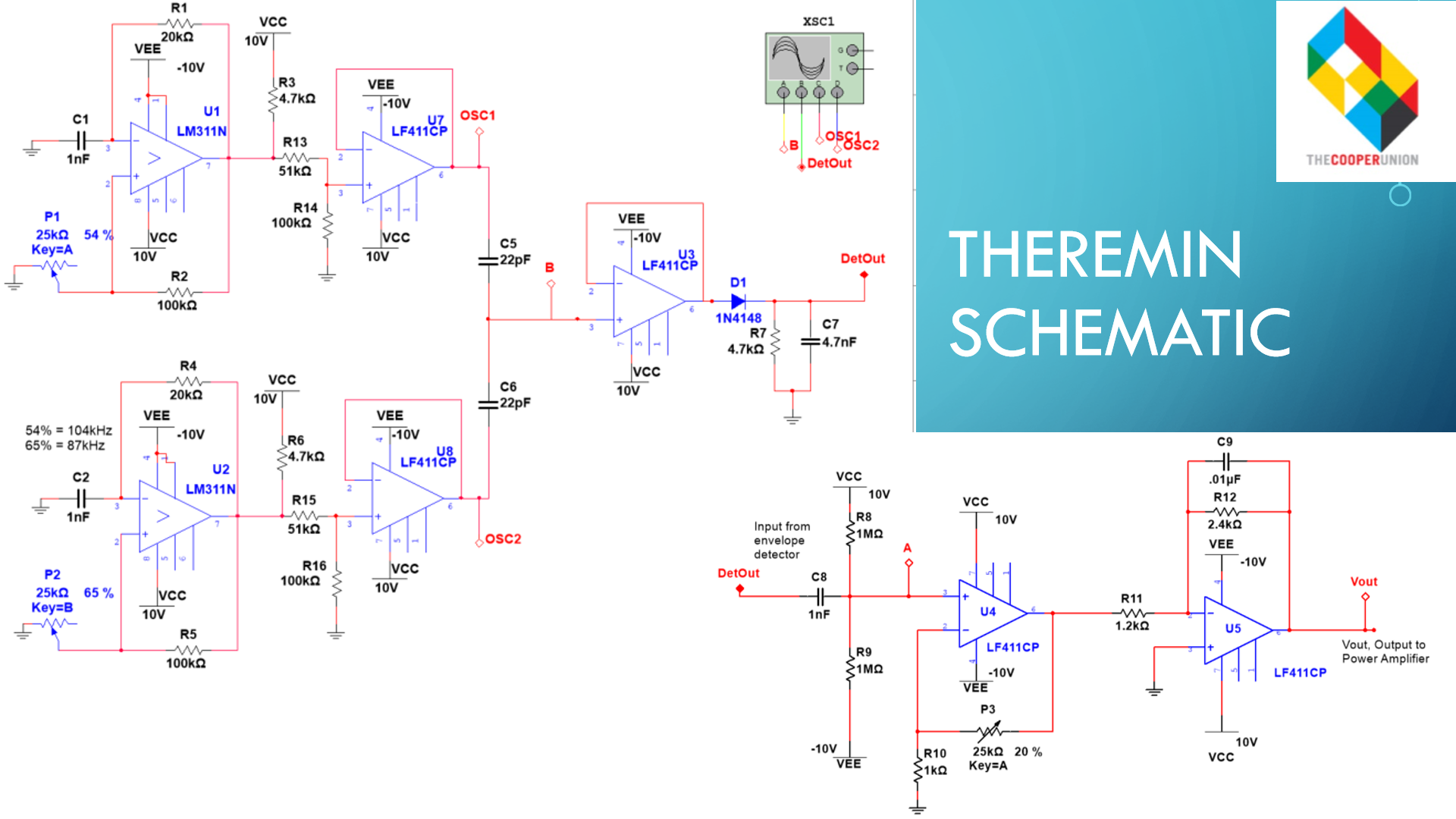theremin
12.2021
The theremin is a musical instrument which is played without physically contacting the instrumentalist. The parasitic capacitance of the human body is used to control pitch and volume, the user changes these parameters by adjusting the distance between their hands and two antennas. Our rendition of the instrument featured a single capacitive antenna, which controls pitch.
The first signal source in the Theremin are two LM311 comparator-based oscillators, one fixed and one variable. A copper rod acts as an antenna, which varies the frequency of one of the oscillators based on its proximity to the user’s hand. These oscillators produce square waves, which are passed through two LF411s acting as voltage followers to isolate the oscillators. The two signals are then combined through capacitive coupling, and passed through another op-amp configured as a buffer. A passive low-pass filter then creates a signal based on the envelope of the two mixed square waves, and another LF411 amplifies the envelope signal. This signal is passed through an active low-pass filter, and is finally output to an audio amplifier.
This project was completed in collaboration with fellow student Thomas Coor.
electrical engineering sophomore projects
ECE 291
This course focuses on one particular complex system (e.g., music synthesizer, wireless transceiver, radar) to introduce a wide range of electrical engineering principles such as frequency response, noise, feedback, loading and interfacing. In a laboratory setting, students investigate the design of subsystems that may include amplifiers, oscillators, RF or opto-electronic circuits, A/D and D/A converters, and power circuits. By measuring the impact of the operating conditions on circuit performance, students learn the principles of systems engineering, development of a testbench, and proper documentation. By the end of the semester, the class will have developed a complete functioning system through reverse engineering.

